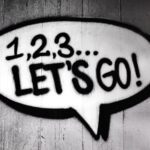
Emotion Design: Designing for Humans, by Humans

David Carson is a graphic designer that I really admire, and I always enjoy his presentations and talks. In one of his talks for TedX, which was also one of the talks in the resources list this week, he brought up quite an interesting argument: ‘the emotion of design’. What is it really? What does It take to get to the final project? The talk dates back to 2003, however it is still a very relative statement even today, almost 20 years later. People seek experiences rather than simply a finished product.
This brought me to google this exact term: ‘emotion design’, to which it has returned some interesting reads. It seems that emotion design is a branch of design thinking, and an extension of human-centred design. As the name suggests, it has to do a lot with how the users connect to a particular product or service. Nowadays, designers want to elicit proper emotional responses with their products that allow the user to have a positive experience. Humans are always seeking to form such emotional connections with objects in the environment. According to Don Norman, author of Emotional Design: Why We Love (or Hat) Everyday Things, splits this concept into three levels.
The Three Levels of Emotional Design
- Visceral Design: This form of design has to do with the appearance of the product. It is the physical aspect of the product – the look, the feel, colours… and how it makes the user feel. This also encompasses a product’s “branding” to an extent and how it compares to other similar products.
- Behavioural Design: This concerns the please and effectiveness of the product when it is used. This form of design prioritises usability and functionality. Good behavioural design allows users to easily complete tasks and find things they are looking for. Usability is also quantified in how many mistakes a user makes whilst trying to complete a task with a product.
- Reflective Design: This last level has to with rationalisation and intellectualisation of the product. This means that the user’s perception of the product is also taken into consideration – how does the user feel about the product. Also, does it help them their reputation? What will others think if the users were seen making use of a specific product?
Plutchik’s Wheel Of Emotions
In relation to the above, I also came across this theory that links emotions to different colours on the colour wheel. The psychologist Robert Plutchik is the mind behind The Psycho-Evolutionary Theory of Emotion. Essentially, this is a theory, or rather schematic that helps in categorising emotions into branches of emotional responses to them. Plutchik argues that each of the primary emotions are a result of evolution, and each subsequent branch of responses is the one that is most likely to ensure adaptation for survival.
Plutchik included 10 claims, or postulates, with his theory. These are:
- Animals and Humans: emotions are applicable to all evolutionary levels including humans and animals.
- Evolutionary History: emotions have an evolutionary history and have evolved from different expressions in different species.
- Survival Issues: emotions are an adaptation by organisms to help deal with environmental survival issues.
- Prototype Patterns: while there are different kinds of emotional expression in species, there are certain “prototype patterns”, or common elements, that can be identified.
- Basic Emotions: there are a small number of basic evolutionary emotions.
- Combinations: all emotion branches are mixed combinations of the primary emotions.
- Hypothetical Constructs: the primary emotions are hypothetical constructs or ideal states whose properties can be inferred by evidence but not stated accurately in full.
- Opposites: primary emotions on the wheel can be visualized in terms of polar opposites. For example, sadness is the opposite of joy.
- Similarly: all emotions vary in degrees of similarity to one another.
- Intensity: all emotions vary in degrees of intensity. For example, joy is the middle ground between serenity and ecstacy.

In conjunction to this, in order to help the user understand the underpinning behaviours of each emotion and how they come into play with one another, Plutchik devised the Wheel of Emotion. The emotion wheel makes use of the basic colour wheel that allows for easy comparisons, contrasts, and pairings. Essentially, combining two colors on the palette creates a more complex level of emotion.
It is a very interesting way of approaching colour theory in design. As the public is seeking products and brands that can relate to, as opposed to just ‘well-made products’ it has truly become an all-encompassing process where everything should be taken into considerations.
Bibliography
Rose Street Creative. n.d. What Is Emotion Design? — Rose Street Creative. [online] Available at: <https://www.rosestreetcreative.com/blog/what-is-emotion-design> [Accessed 7 November 2020].
Carson, D., 2003. Design And Discovery. [online] Ted.com. Available at: <https://www.ted.com/talks/david_carson_design_and_discovery?language=en> [Accessed 9 November 2020].





